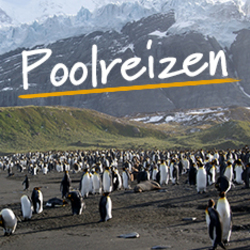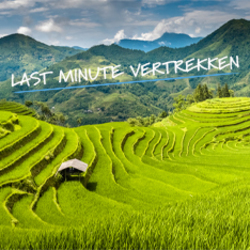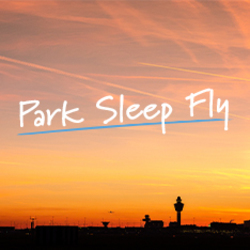Maak kans t/m 5 januari
BekijkActivities
- Culture
- Natural Wonders
- Cultural Wonders
- Festival Holidays
- — Experiencethe spectacularly varied landscape of Mongolia — Sleep in ger camps (traditional Mongolian tents) — Visit Karakorum, the ancient capital of the Mongol Empire — Marvel at the rolling dunes and landscape of the Gobi Desert — Discover one of the last remaining nomadic cultures in the world
Food
-
1
Start Ulaanbaatar
The adventure begins in Ulaanbaatar, the capital of Mongolia. Anyone who arrives early can explore some of the city sites, including Sukhbaatar Square (the main square), the National Museum and the landmark State Department Store. A group welcome briefing is held at the hotel this afternoon/evening. Accommodation: Bayangol Hotel (or similar)
-
2
To Khustain Nuruu National Park; trek to see Przewalski's horses; overnight in ger camp
Before leaving UB, we visit the Gandan Monastery, the largest functioning lamasery in Mongolia and the seat of Buddhist studies in Mongolia. Here we may see monks praying and a 65ft (20m) tall gold-and-bronze statue of Migjid Janraisig. We then drive on the main road westwards towards Karakorum, making a detour to Khustain Nuruu National Park, two hours west of Ulaanbaatar. Khustain Nuruu is famous for the re-introduction of Mongolia’s wild horse. The Przewalski’s horse (also known as the takhi horse) is native and almost became extinct earlier in the 20th century. Through the efforts of several Mongolian and international organisations, these magnificent wild horses now roam in the steppes of the national park once again. We visit the Project Information Centre and take a guided hike to see the wild horses. Tonight is our first night staying in gers, traditional Mongolian felt tents. Accommodation: Ger camp
-
3
Drive to Little Gobi Desert; visit Khogno Khan Mountain; opportunity for bird and wildlife watching
We continue our journey westwards towards Karakorum along an asphalt road, travelling at an easy pace. Today’s destination, the Mongol Els (or Little Gobi Desert) is a unique belt of dunes in the steppe. Arriving at lunch, we check into a ger camp before exploring the surrounding region. Bactrian (two-humped) camels wander the desert dunes as horses graze on green steppe nearby – an incredible sight. We visit nearby Khogno Khan Mountain and the small temple at its base. This region is also renowned for its birdlife, including steppe eagles. We return to camp in the late afternoon. Accommodation: Ger camp
-
4
To Karakorum; visit Erdene Zuu Monastery
Today we have a 56mi (90km) drive to Karakorum, the 13th-century capital of the Mongol Empire. It was established by Ogedei Khan and remained the Mongol power base until Kublai Khan established Beijing as the capital. Erdene Zuu (Hundred Treasures) Monastery was the largest monastery in Mongolia, built in 1586 under the direction of Abtai Khan on the ruins of the ancient capital. Much of the monastery was destroyed during Stalin’s purges of the 1930s, but an impressive wall with 108 stupas and several temples remain. After lunch, we visit the monastery, the modern Karakorum Museum and the surrounding area. Accommodation: Ger camp
-
5
Morning visit to monastery; along northern edge of Gobi Desert to Arvaikheer via Shankh Monastery
We continue along the paved road to Arvaikheer, the capital of Ovorkhangai Aimag on the northern edge of the Gobi Desert. On the way, we visit the Shankh Monastery, once the home of the great Mongolian theologist Zanabazar. We should arrive at Arvaikheer mid-afternoon and check into our hotel. We have time to visit the local museum, which contains nature collections, stone figures and Turkic scripts and possibly go to a local market. Accommodation: Hotel
-
6
To Bayan Gobi via Ikh Bogd Mountain
Today is a long day as we head properly off the tourist route into some of the wilder parts of the Gobi Desert. After an early breakfast, we start our journey and rapidly leave the paved road. The landscape changes as we head deeper into the Gobi, while the majestic Ikh Bogd Mountain, the highest mountain in the Gobi Altai mountain range, should be visible in the distance. After about nine hours of travelling (with stops) we arrive at our ger camp in the wilderness. This is the longest day of driving but is also a highlight of the trip as we pass through some of the most spectacular scenery in Mongolia. Accommodation: Ger camp
-
7
See rock paintings; explore region of Bayan Gobi
After going over a desert pass and visiting the quartz-rich White Cave, our journey continues through classic Gobi Desert scenery of flat stony plains mixed with small rocky outcrops and patches of sand across the Khatan Suudal Steppe. We stop for a picnic lunch on the way, with views of Arts Bogd mountain to the north. We head off to the Kongoriin Els dunes and arrive in the late afternoon. Accommodation: Ger camp
-
8
Visit the Singing Dunes, the largest dunes in Mongolia
We have a full day to explore the dunes and surrounding area. The Khongoriin Els stretch for 125mi (200km) and are as high as 985ft (300m) in places. They are known as the Singing Dunes, because of the beautiful sound that resonates through them on a windy day. The South Gobi has 100,000 camels, typically used by herders for transportation of their gers. We have the opportunity today to visit a camel-breeding family and learn about the life of the local nomadic herders. Accommodation: Ger camp
-
9
Travel through the rocky plains of Gobi Gurvansaikhan National Park
This morning, we drive through the Gobi Gurvansaikhan National Park. Gobi Gurvansaikhan means ‘Three Beauties of the Gobi’ and this range marks the eastern end of the Gobi Altai range. The park landscape is extremely varied, with rocky and sandy desert plains, precipitous cliffs and ravines, saltpans and oases. We visit a spectacular natural sight, Yolyn Am (Vulture’s Mouth), a canyon so deep and narrow that winter ice can remain on the valley floor even in the height of summer. This region is also renowned for the diversity of its wildlife and many endangered species live here, including Mongolian wild asses, argali sheep and the elusive snow leopard. We visit a museum and explore the canyon before transferring to a nearby ger camp for the night. Accommodation: Ger camp
-
10
Hiking around the Flaming Cliffs of Bayanzag
Today we have time to relax in our luxury ger camp. Either in the morning or afternoon, we take a 43mi (70km) drive to Bayanzag. Known as the Flaming Cliffs, the red-ochre colour can be striking and we have the opportunity for a short hike among colourful sands of red, yellow and orange. Bayanzag is also a world-renowned dinosaur fossil exploration site, discovered in the 1920s by Mongolian and American palaeontologists. We are free to explore the region and may even be lucky enough to spot dinosaur fossils. We later return to our ger camp. Accommodation: Ger camp
-
11
Fly to Ulaanbaatar; to Terelj National Park
We leave the Gobi Desert and fly back to Ulaanbaatar. Upon arrival, we’re picked up by our bus and drive to Terelj National Park. Though it’s only about 37mi (60km) away, traffic is the main determining factor as to how long this journey takes. Terelj National Park is a large, protected area of green mountain meadows filled with edelweiss and other wildflowers. The contrast to the Gobi Desert is striking and it feels like being in a different country. We then have our final night in a ger. Accommodation: Ger camp
-
12
Terelj National Park; Genghis statue; Ulaanbaatar
This morning, we visit the Tibetan-style Aryabala temple, a meditation centre on a mountainside with sweeping views over the national park. As we follow the walk up to the temple, we can read inspirational sayings on placards every few steps. The climb to the temple is not difficult but does involve many steps and can be tiring. We later visit the giant Genghis Khan statue at Tsonjin Boldog. Standing 130ft (40m) tall, it depicts the Mongolian ruler astride his horse and sits on top of the visitor centre (itself 33ft/10m tall). It is possible to climb up onto the horse’s head to get a closer look of Genghis Khan’s face. We finally make our way back to Ulaanbaatar. This evening, we have the option of attending a local song and dance performance at the National Academic Drama Theatre (US$10) before our last meal together. Accommodation: Bayangol Hotel (or similar)
-
13
End in Ulaanbaatar
The tour ends after breakfast today and we begin our return journeys home, full of tales and magnificent photos to share.

































